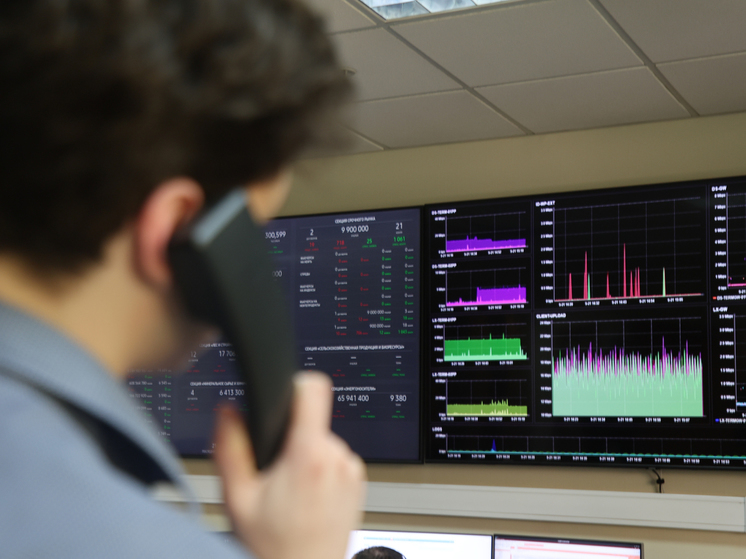Market plunge sparks memories of global recession
Stock markets around the world fell sharply on Monday, with Japan's Nikkei down 12%, after questions about the health of the U.S. economy. Fears of a U.S. recession swept through global markets, triggering a stock market slump that prompted investors across Asia, Europe and North America to trim their positions simultaneously.

Stock markets around the world saw sharp falls on Monday, with Japan's Nikkei down 12%, after questions about the health of the US economy. Fears of a US recession have gripped global markets, triggering a stock market rout that has prompted investors across Asia, Europe and North America to pare their positions simultaneously.
The sharp decline has raised questions about whether investors are facing a historic stock market crash — similar to the global financial crisis or Black Monday in 1987 — or just a belated pullback after a stellar period of high returns, The Guardian reports.
So what caused the market crash? The volatility worsened after the US Federal Reserve hinted after its July 31 meeting that interest rates would soon be cut, which was initially seen as a boost to stocks.
But gains quickly evaporated as investors reinterpreted the upcoming rate cut as a sign that the world's largest economy was faltering, The Guardian notes.
Several economic data points, including manufacturing, durable goods and, crucially, jobs and wages, have raised questions about the state of the US economy as the widely known “Sam Rule” signals a recession. The indicator, which is triggered by a rapid rise in the unemployment rate, has accurately identified every recession since the Second World War, The Guardian explains.
AMP chief economist Shane Oliver said «recession fears are back with a vengeance now, particularly in the US.»
Nick Healy, a Sydney-based portfolio manager at Wilson Asset Management, said the US data had come in worse than expected, prompting a strong market reaction.
«It would be fair to classify this as a repositioning, but I think it's difficult to extrapolate too much from one month's economic data into the future,» Healy said.
After a weekend break to digest the news, Asian markets began to slide on Monday, spreading to European and U.S. markets later in the day.
Wall Street's fear gauge, the CBOE Volatility Index, soared above 65, levels not seen since the pandemic and reminiscent of the GFC index, before leveling off.
The S&P 500 lost 3% on Monday, while the tech-heavy Nasdaq lost 3.43%. While both figures were remarkable, they were more modest than initially estimated in the futures market, bringing some relief to traders and raising hopes that the sell-off will not turn into a full-blown crash.
Even after the losses, the benchmark S&P 500 is still up more than 9% since January, as is the Nasdaq.
Which was hit the hardest? Stocks, stock markets and indices that rose the most tended to fall the most, The Guardian notes.
Chip maker Nvidia, which has had a spell of strong returns in the tech sector, fell as much as 15% at one point on Monday before halving its losses, while Bitcoin also fell sharply.
Australia's stock market suffered its worst day since the pandemic began, with local shares wiping out more than $100 billion in value in a single trading session.
But Japan's Nikkei was the hardest hit, falling 12% on Monday before rebounding sharply early Tuesday.
Investors have been worried about the health of the Japanese economy and the recent impact of the yen's strength, which has led to a breakdown in the so-called carry trade, in which investors borrow cheaply in yen and buy higher-yielding assets including the U.S. dollar.
Analysts have warned that the yen carry trade is shrinking, triggering margin calls and forced selling.
Online trading firm IG said it suspected the wild market action in Japan was “the final act of clearing long positions in Japanese trading,” referring to investors who had been involved in the yen “carry” trade.
Some safe haven assets such as bonds were among the few places to escape the turmoil as the sharp price swings cast doubt on the sure bets of recent months.
This optimistic mood was underpinned by optimism about artificial intelligence and the tech sector in general, as well as expectations that inflation will fall, labour markets will remain resilient and the economy will emerge from the inflationary period unchanged.
What happens next? It is too early to tell whether selling pressure will ease, but at least the sharp fall in prices is a warning shot, The Guardian points out.
Fears about a global recession in recent years have been linked to concerns that rising living costs will eventually lead to spending cuts to the point that the economy will start to go into reverse.
One of the “canaries in the coalmine” that investors are paying attention to is U.S. online furniture and home goods company Wayfair, which warned on Thursday that customers have become very cautious after seeing spending fall nearly 25% from a peak three years ago.
“This reflects the magnitude of the jump in home goods prices that occurred during the Great Financial Crisis,” Wayfair Chief Executive Niraj Shah said on an earnings call.
While this discretionary spending data confirms the likelihood of a bear market, investors are also paying attention to the upcoming U.S. elections and related spending initiatives, which could provide another boost to stock prices.
“We have a situation where both candidates and both parties are very excited about spending money that should help inject fiscal dollars into the economy,” Healey said.


